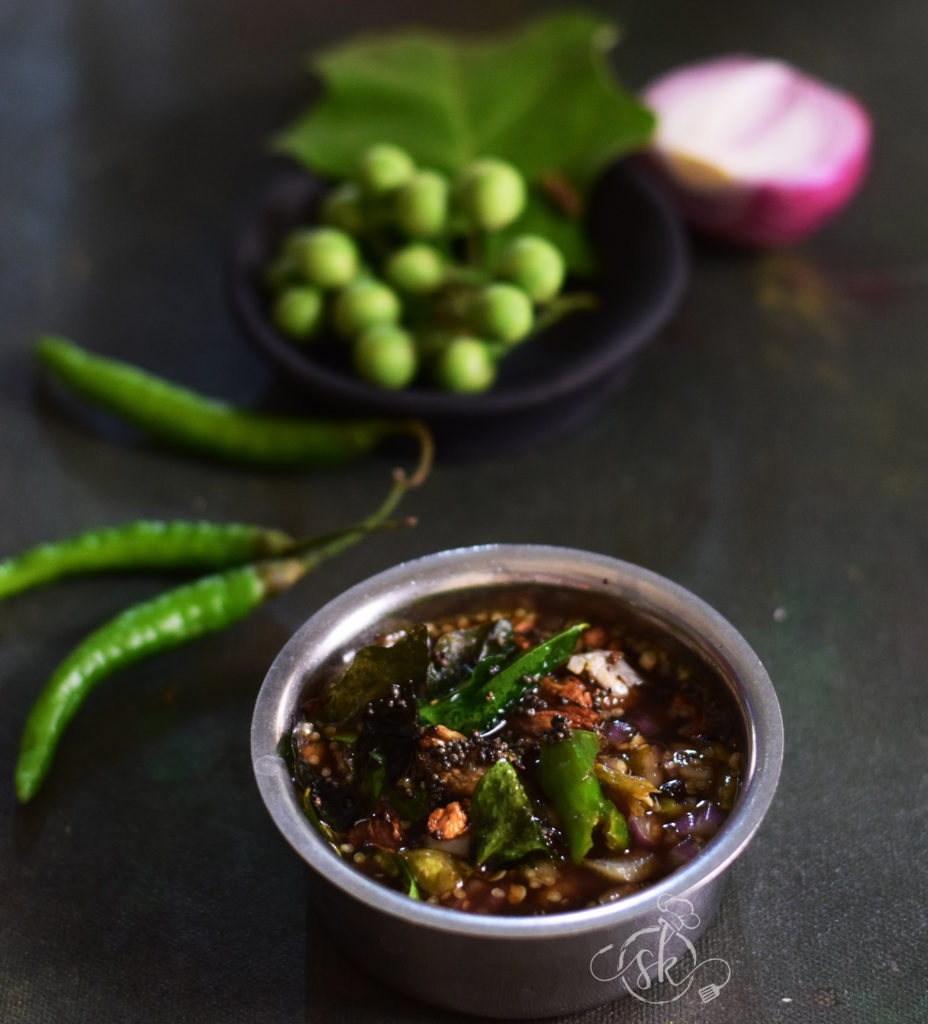Kudane, Thai brinjal, is widely used in our coastal region. We use it in its fresh, raw form, not dried. Earlier, it grew as a wild plant, and people never cultivated it. When my mother in law offered a sapling, I was excited and took the plant with me. Now, it is a part of my terrace garden and yields well.
Solanum torvum is its Scientific name. It also has many other names such as wild eggplant, baby brinjal, Devil’s fig, sundakai in Tamil and Usthi kai in Telugu.
It is not only a nutritional powerhouse; it can heal our gut ( various intestinal issues ) and increase haemoglobin levels. It is one more locally-grown veggie, much neglected by us.
The taste of the turkey berry is more on a bitter side. Berry has to be processed in a particular way to eradicate its bitterness and to enhance the flavour. There are two ways to process.
The cleaning process is simple. The first one is to remove the stalk, crush it gently, and immerse it in water until you are done crushing every berry. Now, just before cooking, wash it a couple of times; in this way, most of the woody seeds settle at the bottom. Collect those cleaned berries, and proceed to cook according to the recipe, the recipe is HERE.
If you opt for the second process, you need to fry those berries after washing them with Ghee or Oil. Then, mash a little and proceed to cook.
Now, let us know the recipe of Gojji / gojju. It is raw curry, no cooking recipe. If you are a person who is fond of sweet-sour-hot curry, this is for you.

Ingredients:
Fresh Turkey berries – 15 – 20
Ghee or coconut oil – 1 tsp.
Tamarind – small gooseberry size.
Onion – ½ (chopped)
Green chillies – 2 Or Bird eye chillies – 4 -6
Jaggery – grated
Salt – to taste
Seasoning: Coconut oil – 1 tsp, mustard – ½ tsp, crushed garlic – 6 – 8, curry leaves – 1 spring.
Method:
-Soak tamarind in ¼ cup of water.
-Remove stalks from the berries, wash properly.

-Take one small Kadai, put ghee or Oil, fry those berries until it turns light/ pale and starts bursting. Switch off the flame.

-Take one spoon, mash a little by using the back of the spoon.
-Now, extract tamarind juice, add it to the crushed berries. Add in salt, jaggery, chopped onions, crush the green chillies and check the taste and adjust.
-Now, heat oil, splutter mustard, fry garlic until it is brown. Add curry leaves and pour over the gojju. Serve with plain rice or with curd rice.







